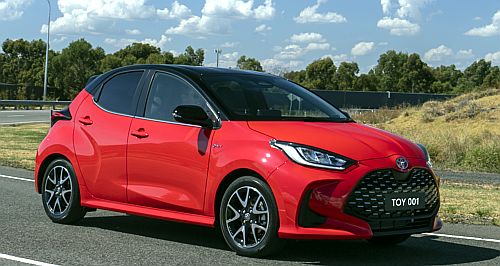Market Insight: Hybrids outsell BEVs once more
BY MATT BROGAN | 23rd Apr 2024

THE Australian Automobile Association (AAA) has released its quarterly EV Index showing Australians are continuing to shift towards electrified vehicles, and that the market share of internal combustion engine (ICE) powered models is continuing to decline.
Both battery electric vehicle (BEV) and hybrid electric vehicle (HEV) new vehicle sales continue to grow, both recording record market share in the three months to March 31.
However, it seems petrol-electric HEV models remain the more popular choice for Australian new-car purchasers with the technology now forming 11.95 per cent of the new car market, up 5.69 per cent from the same time last year.
In national new light vehicle sales from Q4 2023 to Q1 2024, the sale of ICE models fell by 8.03 per cent and ICE market share dropped to 78.18 per cent – falling below 80 per cent for the first time.
BEV sales continued to grow strongly, reaching 8.7 per cent market share, while plug-in hybrid electric vehicles (PHEV) hold only 1.17 of the market.
Hydrogen fuel-cell electric vehicle (HFCEV) deliveries reached just eight units in Australia during the past 12 months.
Overall, national light vehicle sales declined by 3.54 per cent from Q4 2023 to Q1 2024, but year-on-year total sales rose by 13.91 per cent.
The AAA says sales figures from the last five quarters confirm a clear trend of growth for BEVs and HEVs, and a gradually shrinking market share for ICEs, while noting “significant quarterly fluctuations in the past 15 months”.
Over that period, BEV market share rose from 6.77 to 8.7 per cent and total BEV sales rose from 17,396 to 25,468 units. The strongest quarters for total BEV sales and market shares were Q2 2023 and Q1 2024.
In the first half of 2023, BEVs outsold hybrids, but since then hybrids have outsold BEVs in three consecutive quarters, accounting for 11.95 per cent of all light vehicle sales (rising from 9.46 per cent in Q4 2023 and up from 6.26 per cent in Q1 last year).
Hybrid sales volume rose by 117 per cent in the 12 months (from the end of 31 March 2023 to 31 March 2024).
ICE vehicle sales have risen year-on-year, up from 222,136 in Q1 2023 to 228,961 in Q1 2024. But over that period, the ICE share of Australia’s growing new car market has declined by more than eight per cent (down from 86.40 to 78.18 per cent).
Over the last five quarter, ICE market share peaked in Q1 2023 (at 86.40 per cent) and sales volume in Q4 2023 (at 248,943 units).
Looking at fuel and vehicle type preferences in the first quarter 2024, the AAA observes that ICE vehicles continue to dominate the small car, small SUV, and large SUV market segments with HEVs a “distant second”.
Further, and reflecting current availability, 99.0 per cent of all utility and van models sold were traditionally powered, as were more than 95 per cent of all people movers sold.
Interestingly, only 18.61 per cent of medium segment passenger cars sold were ICE powered. BEVs accounted for 52.56 per cent of the segment, and 39.48 per cent of the large passenger car segment. BEVs also performed “relatively strongly” in the medium SUV segment (14.77 per cent of total sales volume).
HEVs sold most strongly among medium cars (28.44 per cent), medium SUVs (21.61 per cent), small cars (17.05 per cent), and small SUVs (11.91 per cent).